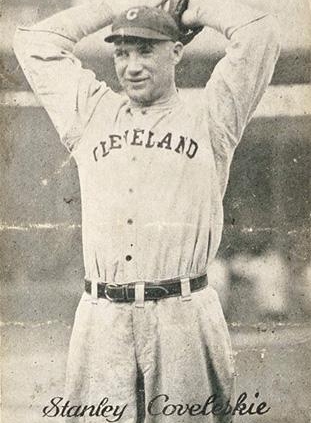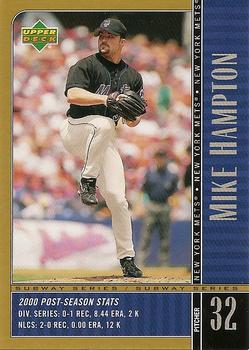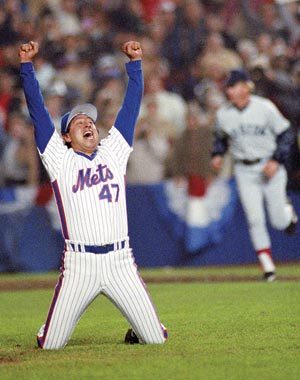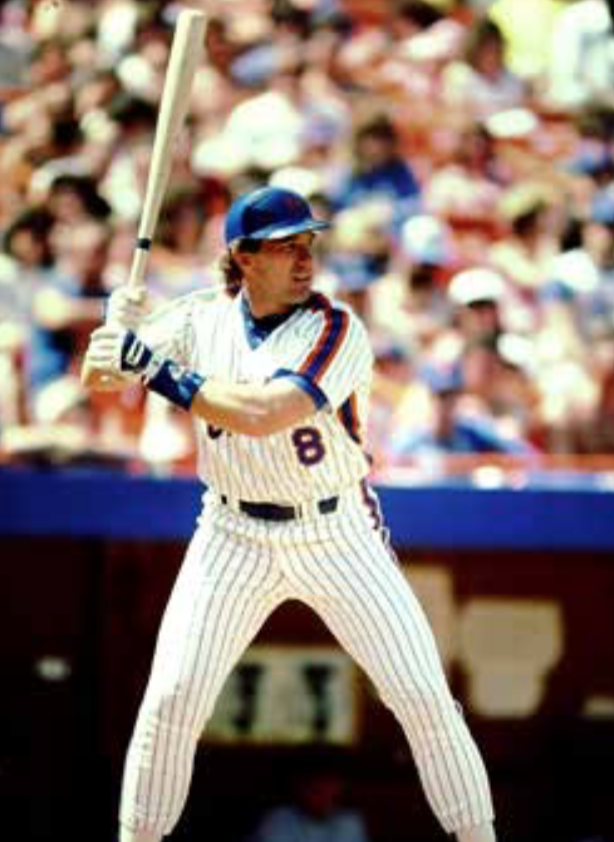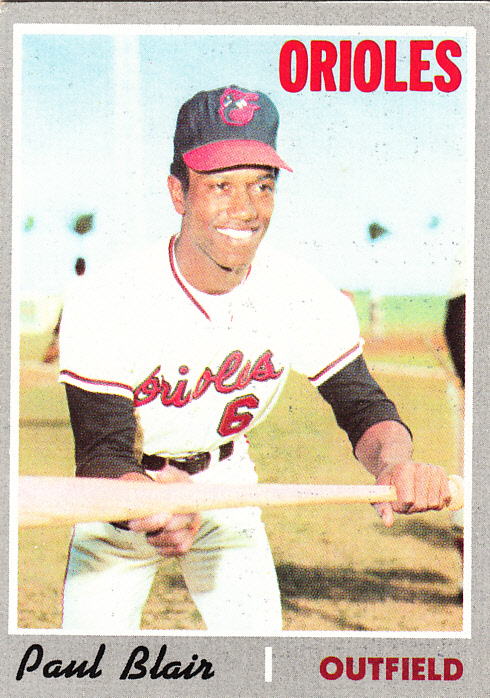October 5, 1920: Coveleski goes the distance to give Indians 1-0 lead in World Series
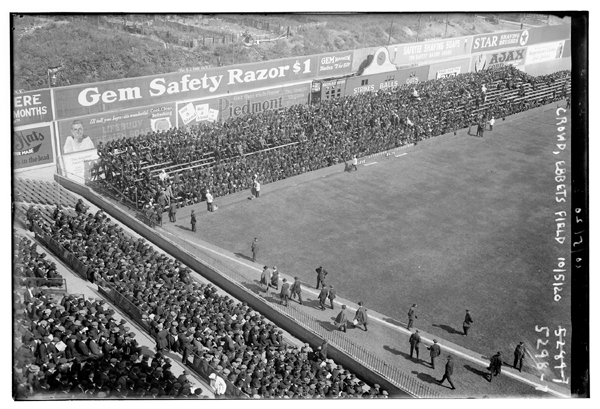
The 1920 best-of-nine World Series opened on October 5 at Ebbets Field, where temporary bleachers were erected on the outfield. In a tight pitching duel featuring just five hits by both teams, Cleveland’s Stan Coveleski emerged victorious, 3-1, over the Brooklyn Dodgers. (Photo: Library of Congress)
The Cleveland Indians were making their initial appearance in the World Series in 1920. Tris Speaker‘s club finally broke through to finish atop the American League after finishing a close second to Boston in 1918, and then to Chicago in 1919. Their opponents, the Brooklyn Robins, were making their second trip to the fall classic, and were hoping for a better outcome than their last appearance. In that World Series, in 1916, they were disposed of in five games by the Boston Red Sox. (Three of the five games were decided by a single run.)
While the Indians were in the midst of a tight pennant race with New York and Chicago, the news broke out of the Windy City that seven current members of the White Sox had allegedly conspired to lose the 1919 World Series to Cincinnati. (An eighth player allegedly involved, Chick Gandil, had retired after the 1919 season). The players were subsequently suspended for the final series of the season. Without many of their key personnel, the White Sox lost two of three to the St. Louis Browns. The Yankees could not close a three-game gap to catch Cleveland.
The Robins were in a pennant race themselves with their archrival New York Giants. On September 25 Brooklyn held a four-game advantage over John McGraw‘s crew. Both teams were headed for a five-game series at Ebbets Field. Brooklyn took three of the five, icing their second NL pennant.
A gray and breezy day at Ebbets Field was the site for Game One of the World Series. The Indians wore black armbands in remembrance of Ray Chapman, who was killed when he was beaned by Yankees pitcher Carl Mays on August 16. The starting pitcher for the visiting Indians was Stan Coveleski, who posted a 24-14 record during the regular season. Toeing the rubber for Brooklyn was Rube Marquard. The tall left-hander was 10-7 during the season, but had not pitched since September 26, when he bested the Giants. The Robins’ manager, Wilbert Robinson, felt that Marquard, a Cleveland native, would be the ideal hurler to neutralize player-manager Tris Speaker and the other left-handed batters in the Indians’ lineup. Of course, Spoke stacked his lineup with right-handed batters to counter the strategy.
The series was a best five-of-nine format, with the games going 3-4-2 between the two cities. The series was supposed to start at Cleveland’s Dunn Field (renamed League Park in 1928). However, Indians owner James Dunn wanted to add more seating with temporary stands in center field and in right field in front of the bleachers. Construction was taking a bit longer than anticipated, so the first three games were transferred to Brooklyn.
The breezy conditions that made it a bit chilly for the fans was not uncommon. Ebbets Field was located in a sort of pocket that took in all the cold drafty weather of Flatbush. The Game One crowd was 23,573, a couple of thousand under capacity. In Cleveland, fans gathered on East 6th Street between Rockwell and Superior Avenues to get as close as they could to the action. An electric scoreboard relayed the action by telegraph to let the throng know what was going on 465 miles to the east.
Cleveland scored first against Marquard. First baseman George Burns hit a high pop just past the infield between first and second base. Ed Konetchy, the Robins’ first baseman, and Pete Kilduff, the second baseman, gave chase. However, the wind blew the ball toward short left field, where it fell out of Konetchy’s reach. Burns, hustling all the way, motored toward second base. Konetchy corralled the baseball and threw to second in hopes of cutting down the baserunner. But Brooklyn shortstop Ivy Olson was not covering the bag. Konetchy’s heave rolled across the diamond to the field boxes in back of third base. Burns dashed home with the first tally of the game.
After Larry Gardner grounded out, Smoky Joe Wood walked. Joe Sewell singled Wood to third. Steve O’Neill ripped a double to left field, scoring Wood and sending Sewell to third. The next batter was Coveleski, who hit a grounder toward first base. Konetchy fielded the ball cleanly, stepped on first base and fired home to catcher Ernie Krueger, who tagged Sewell to complete the unorthodox twin killing and keep the score at 2-0, Cleveland.
The Cleveland defense was at the forefront in the Robins’ half of the second inning. Speaker snared a drive by Zack Wheat a long run and Wood backed up to the wall to haul in a long drive off the bat of Hi Myers. Still, Coveleski was masterful with his curve, keeping the Robins off balance and off the scoreboard. Cleveland added a third run in the top of the fourth on another RBI double by O’Neill.
The Indians weren’t the only team making plays in the field. In the fifth inning Speaker sent a line drive to right field that looked certain to be a round-tripper. But rightfielder Tommy Griffith leapt at the wall and snared the baseball with his left (gloved) hand to preserve the 3-0 deficit.
Brooklyn scored its lone tally in the seventh inning when Wheat led off with a double to right-center field, went to third on a groundout by Myers, and scored when Konetchy grounded out to first. The home team looked as if it might have something brewing in the eighth inning when Krueger led off with a smash toward left-center, but Speaker made a shoestring catch for the first out. Clarence Mitchell, pinch-hitting for reliever Al Mamaux, sent a single to the right-field foul line. Krueger would have certainly scored, showing the value of Speaker’s running catch. Coveleski retired the next two batters.
Game One went to the Indians, 3-1. Coveleski went the distance, scattering five hits and striking out three. Marquard, who pitched six innings, gave up all three Indians runs and all five of their hits, striking out four. Marquard did not start another game, pitching in relief in Game Four.
The Indians’ skipper was all smiles after the victory. “The result of the game goes to show that I was not boasting when I contended that Cleveland would display just as good pitching as Brooklyn,” Speaker said. “They would have us believe that Brooklyn has the real pitching market cornered. It is my belief that the pitching in the American League is every bit as good as that in the National and that our batting average of .302 was deservedly earned.
“Coveleski pitched excellent ball today. With the wind blowing as hard as it was, he worked under a handicap, but he delivered in the pinches, and that is what counts. He never was nervous. It was just a ballgame with him. He pitched a typical Coveleski game.”1
Zack Wheat penned a column for the Cleveland Plain Dealer that gave Cleveland fans a view from the opposition. “Of course a post mortem on the game reveals that we made one mistake in judgment,” wrote the Brooklyn captain.” This is when O’Neill came up the second time. This was in the fourth inning with Wood already on second base. We should have passed O’Neill and nailed the pitcher. Instead O’Neill was allowed to get a two-base hit and brought Wood home. Gardner and Sewell were already out and of course we were reasonably sure to strike out Coveleski. That is the only flaw I can pick in our game. The rest was pure luck.”2
SOURCES
In addition to the sources cited in the Notes, the author accessed Retrosheet.org, Baseball-Reference.com, and SABR.org.
NOTES
1 “Speaker Praises Indians Pitching,” New York Times, October 6, 1920: 10.
2 Zack Wheat, “Indians Had All Luck, Says Wheat,” Cleveland Plain Dealer, October 6, 1920: 17.
Additional Stats
Cleveland Indians 3
Brooklyn Robins 1
Game 1, WS
Ebbets Field
Brooklyn, NY
Box Score + PBP:
Corrections? Additions?
If you can help us improve this game story, contact us.


